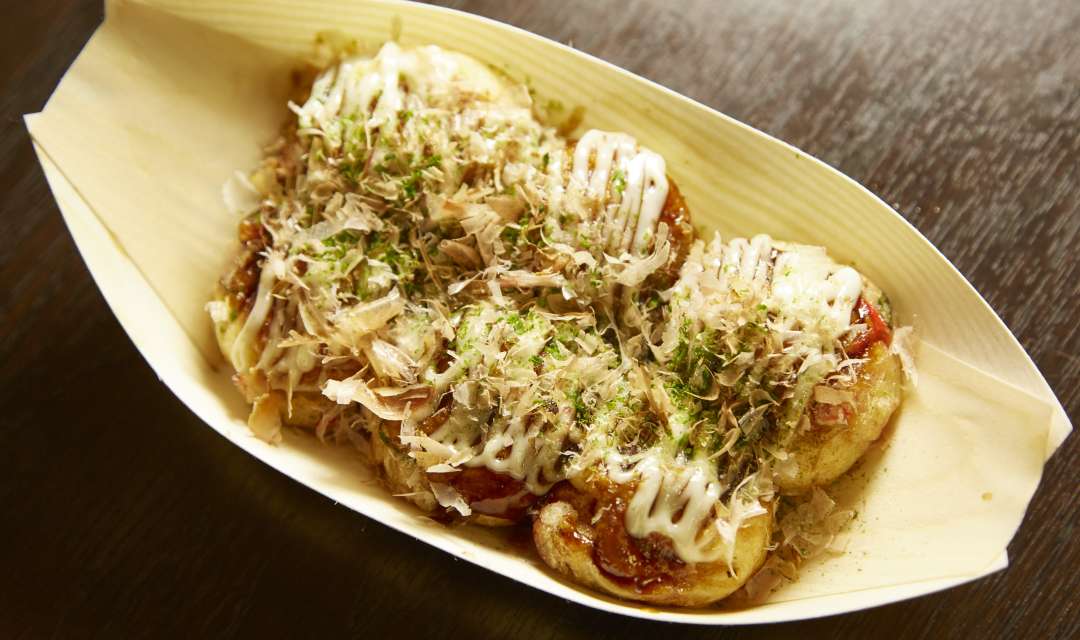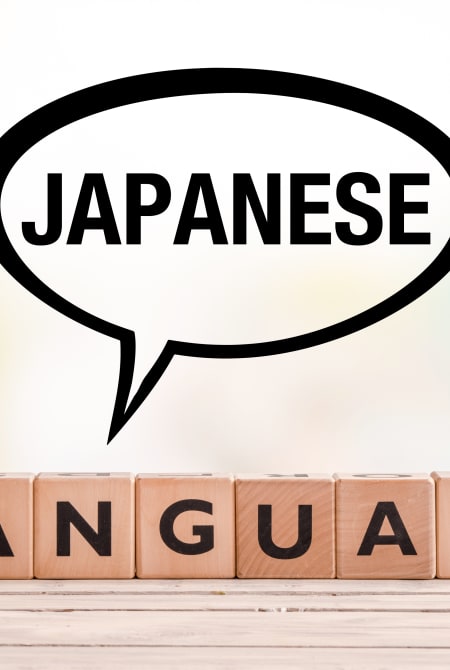Nothing says summer quite like donning a yukata (a lightweight kimono) and heading out to join the seasonal festivities. Summer matsuri (street festivals) are held from mid-July through to the end of August in every corner of the country. They can be neighborhood affairs or huge city-wide festivals complete with political speeches and music performances. No matter the size, every matsuri features food—and lots of it.

Takoyaki is a matsuri favorite
Matsuri food is fun. It’s portable and bite-sized so you can sample plenty of different kinds and it comes in a huge variety—both sweet and savory. Ordinarily in Japan, walking on the street and eating are frowned upon. During a matsuri, all of the food is portable and walking from stand to stand is part of the experience. Some stands have tables and chairs spread out—order at the counter then claim a table to chow down.

Yakitori—grilled chicken and leeks—is a must-try matsuri food
Carnivorous bites
One food that is commonly found at matsuri is yakisoba, a mixture of slivered pork, spring onions, sometimes some cabbage, noodles, and a sweet and sour sauce similar to yakitori sauce. It’s all fried on a big flat iron griddle before being scooped up into individual portions and topped with pickled ginger and a chopped green herb, similar to chives.
Skewered and grilled meats are another favorite. The classic is yakitori—marinated chicken thighs and chunks of leeks grilled together. Grilled squid (which is perfect with a cold beer), chunks of Kobe beef, grilled mushrooms, green peppers, and grilled spring onions are all popular, too. Another specialty is scallops grilled in the shell, over a fire.

Takoyaki is delicious and bite-sized, making it ideal festival fodder
Fast & filling bites
Takoyaki is a huge hit in Japan, and quite a surprise for the uninitiated -- using a special cast-iron pan with multiple spherical wells, a light fritter batter is poured into the hot pan. As the batter begins to cook, pieces of cooked octopus are added to the middle, along with a sprinkling of puffed rice. With a special tool that looks like an ice pick, the cook flips the cooking balls of batter multiple times, until the batter forms a crisp, soft sphere around the fillings. These croquettes are smeared with a savory sauce and DIY toppings of Japanese mayonnaise, fish flakes, and crushed seaweed. It’s best eaten whilst drinking a very cold beer. In many places, vegetarian options are available in place of the octopus, including a particularly delicious cheese version. (I’m a huge fan of cheese in the middle). Other veggie options to look out for are agemochi, a sticky-rice dough deep fried and then coated with soy, or dango, a mochi ball grilled on a skewer, and dipped in a sweet soy sauce.
The variety is boundless, but look out for Japanese-style fried chicken—a heavenly vision of fried chicken and okonomiyaki, a delicious kind of fried vegetable-pancake-fritter.

Okonomiyake is a filling comfort food
Other treats to try
Matsuri food isn’t merely an endless march of salty snacks. King of matsuri food for kids (and many adults) are a kind of filled, gridded cake in the shape of a fish, called taiyaki—think waffles, but in the shape of a fish—filled with red bean paste, sweet black sesame, or vanilla custard. Matcha ice cream is always popular, but the king of refreshing summer treats is kakigori—shaved ice piled high in a bowl and topped with a flavored syrup and condensed milk. It’s icy heaven on a sweaty evening. Try melon—the color is neon, but it’s very satisfying. Another sweet treat to try is ameichigo—fresh strawberries encased in a beautiful clear candy shell.
And what to drink during these beautiful balmy evenings? Cold beer, namazake (fresh, unfiltered sake that’s a bit cloudy), cold green tea, and fruit juices are all available but don’t miss out on a chance to try ramune, a refreshingly sweet soda that comes in a special glass bottle. It’s part of every Japanese childhood.
There is some notable matsuri, including the Tenjin Matsuri in Osaka, Gion Matsuri in Kyoto, and the Mitama Matsuri in Tokyo, but there are so many happening all across the country during summer. While the big festivals have more wow factor, sometimes the smaller matsuri feels more intimate. Don’t hesitate, even if you don’t speak the language—just hold out some money, point at something delicious, and smile—it’s matsuri time!
-
About the author
Brock has lived in both the Kansai and Tokyo areas for more than six years, so he has his fair share of sweaty summers under his belt. He’s become an expert in finding some quiet nature to dip into on the weekends, knowing that you have to balance all-you-can-drink karaoke with fresh air.





















































